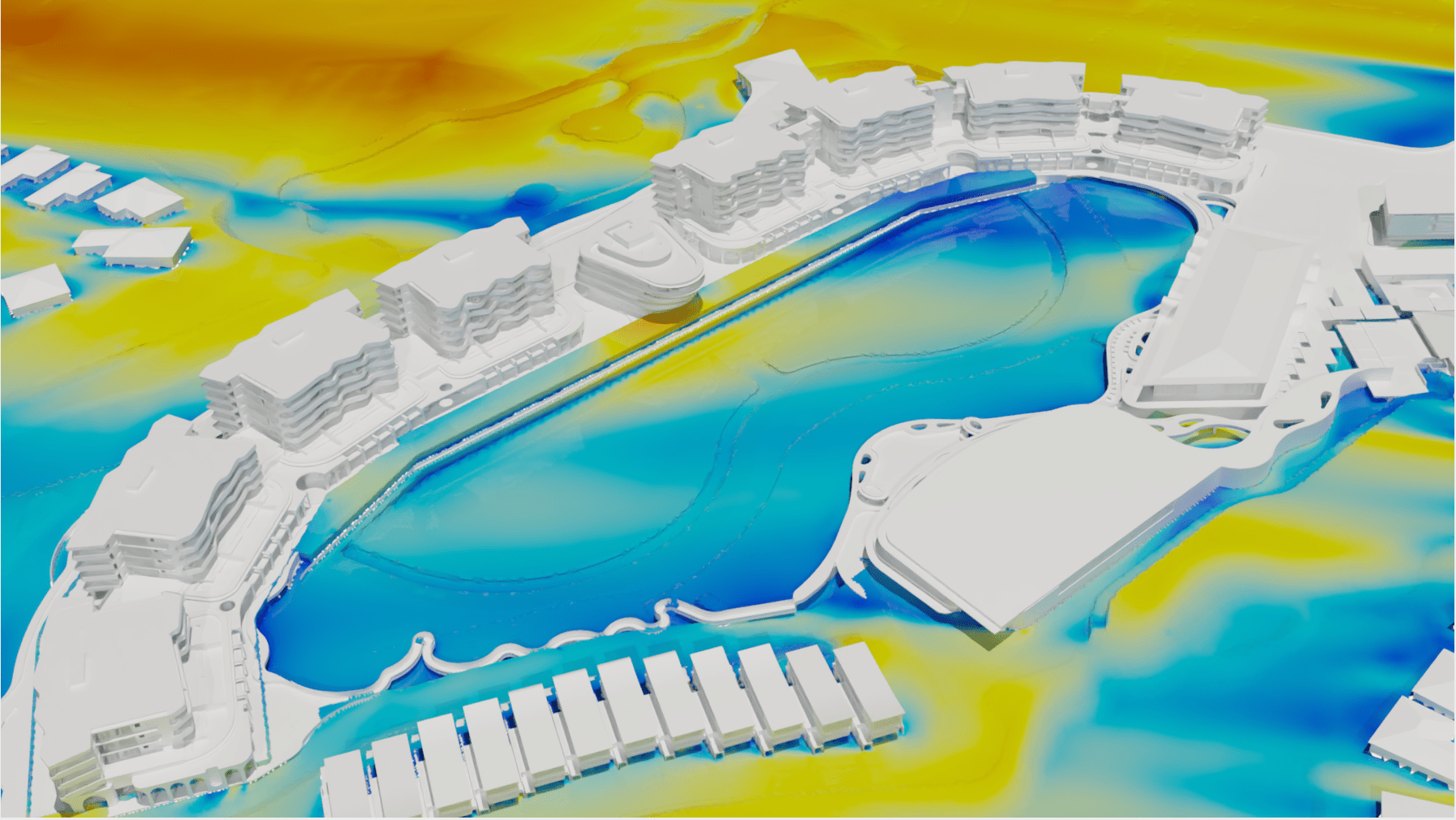Why wind mapping is key for your surf park project

Not every project has considered the wind’s effect on their tank’s surf conditions. But now a group of aerospace engineers want to help wave pools correctly plan for wind conditions. Here’s how:
After seeing an article online about how wind affects the waves at Kelly Slater’s pool in California, Luca Oggiano became inspired. There was more that could be done. As CEO of NablaFlow, a Norway-based company that specializes in wind simulations, he decided that he and his team could find the solution.
It turns out that there is a lot that can be done in the planning phase of a surf park to mitigate the negative effects of wind. By studying the prevailing wind directions, surrounding geography, and placement/shape of the facilities that surround a pool, various actions can be taken to greatly reduce the strength or even alter the direction of the wind as it hits the wave.
“You have to be careful if you are (building a pool) in a windy area,” said Oggiano. “At the very least you should check that your pool is aligned with the dominant wind direction to make it offshore.”
“(Reducing the negative effects of wind) can be done in many ways,” Oggiano continued. “For example, you can add nets to break down turbulence, plant trees, build fences, and carefully plan the shape and placement of the surrounding buildings. This all has to be part of the design process. People may think they know the general wind direction, but you can’t guess. You need to have validation from simulations to fully understand the situation. If you don’t consider these elements until after the pool is built, the damage is already done.”
Aside from being a surfer, Oggiano is also an aerospace engineer with a Ph.D. in sports aerodynamics. He has been studying how air affects performance for over fifteen years in sports like cycling, surfing, skiing, speed skating, running, football (soccer), and Formula 1. NablaFlow has been involved in many wind projects for city planning, such as strategically sheltering bike paths from the wind and using the wind to freshen up a stuffy city. But now they are ready to break into wave pools and their team of engineers – who are also surfers – are eager to get started.
NablaFlow has already worked on a pilot project with Endless Surf in Australia to make sure the wind wouldn’t have adverse effects on their pool. Oggiano is optimistic that running wind simulations will soon become the standard for any new wave pool project. At the price of roughly €5,000 for a report, he thinks it’s well worth the money.
“We are trying to grow into the wave pool space,” said Oggiano. “There is awareness. When we were at Surf Park Summit (in September) we saw quite a bit of interest both from the architecture side and the wave pool manufacturer side. It’s something that people are starting to understand has some importance. If you have a $35m project, you will definitely want to consider running a few simulations.”
Hiring a wind simulation consultancy is nothing particularly new in the area of construction and development, so what sets NablaFlow apart? They have produced a cloud computing product called ArchiWind. For jobs that used to require hiring consultants, waiting weeks, and paying eye-opening fees, ArchiWind can now do it better in a matter of hours for much cheaper.
Oggiano and NablaFlow created ArchiWind through cloud computing, machine learning, and lots of trial and error. The tool took five years of research to perfect. NablaFlow had been privately using the tool for a few years, but now they are launching it for the public to use.
“(To use ArchiWind) you need to supply 3D files of the project and the location – that’s it,” said Oggiano. “Once we have the information we retrieve the wind statistics from that location and launch our simulations from each wind direction. We aggregate the results and create a report detailing how much wind on average there will be in each part of the pool in each season, each month, etc. In the past it was super difficult with consultants, machines, etc., but now all that is gone.”
The wind data that the tool uses for inputs is public information, but the secret is behind the simulations that factor in trees, buildings, or any type of obstacle that will have an impact on wind.
So how long until ArchiWind is synonymous with wave pool development? Oggiano thinks it’s just a matter of time before pools realize they can’t afford to not use it.
“I’ve personally haven’t yet had the pleasure of surfing a wave pool, but I wouldn’t like to pay for an onshore wave,” Oggiano concluded. “I think that the cost to benefit ratio of checking that the wind is correct at your wave pool is extremely high. What makes a wave good is not only the wave technology, but the wind associated with it. As surfers, we all know that.”
Related Coverage
